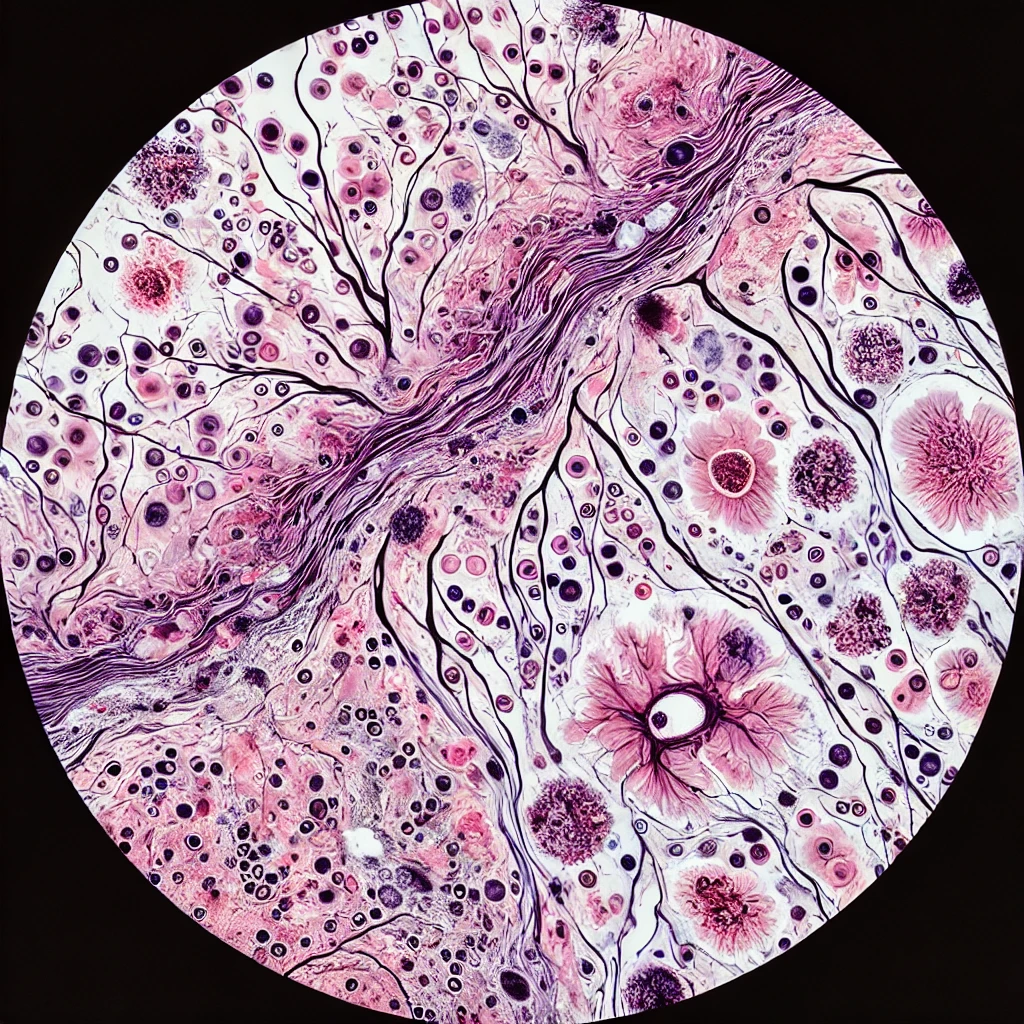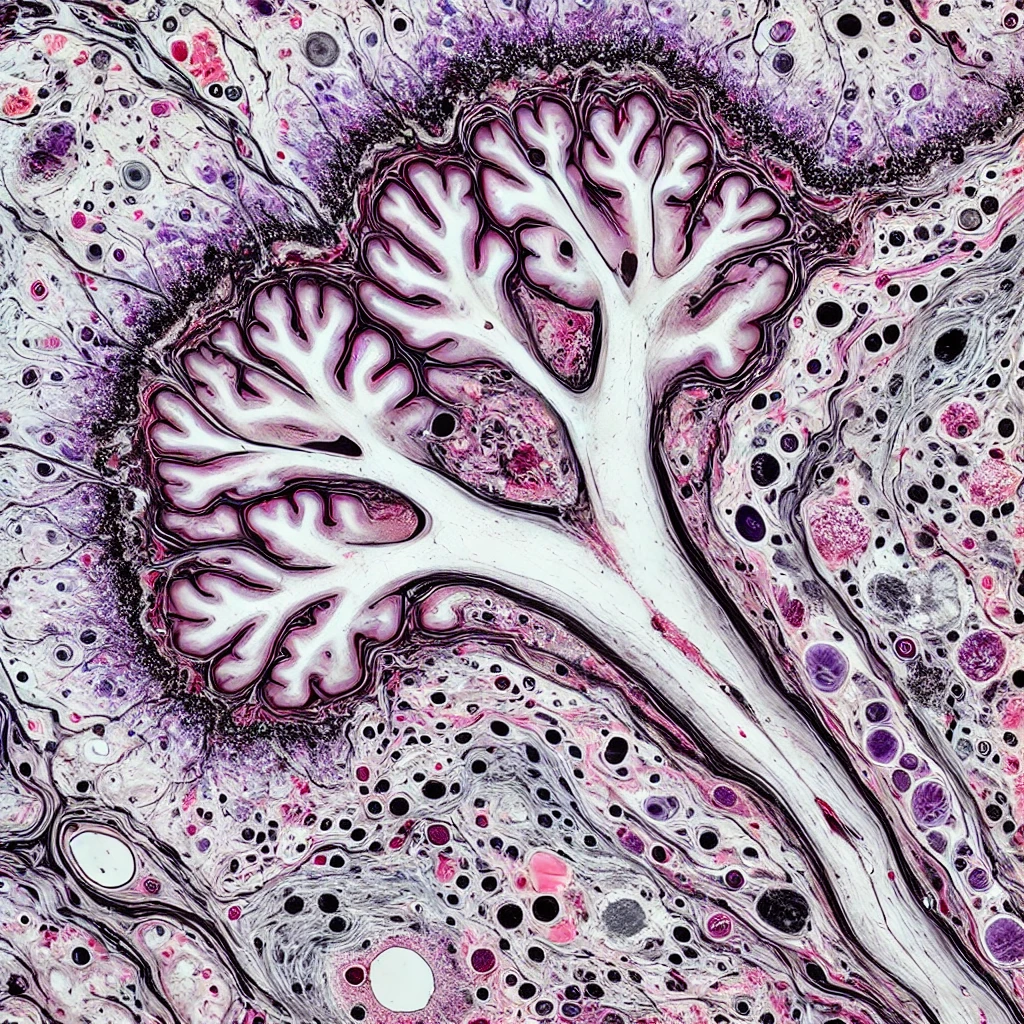This is an image of brain tissue under a microscope.
It shows the different types of cells that make up the brain.
These cells include neurons, astrocytes, and oligodendrocytes.
Each of these cells plays a different role in the function of the brain.
Neurons are responsible for transmitting electrical signals, astrocytes provide support and protection to neurons, and oligodendrocytes produce myelin, which insulates neurons and allows for faster signal transmission.
Together, these cells work together to allow the brain to function properly.
Understanding the structure of the brain at the cellular level is important for understanding how the brain works and how it can be affected by disease or injury.
By studying brain tissue histology, researchers can gain insight into the underlying causes of neurological disorders and develop new treatments to improve brain function.

This image shows neurons, glial cells, and blood vessels in the brain.
Neurons are the primary cells responsible for transmitting electrical signals in the brain.
Glial cells provide support and protection to neurons, and blood vessels supply oxygen and nutrients to brain tissue.
Together, these cells work together to allow the brain to function properly.
Understanding the structure of the brain at the cellular level is important for understanding how the brain works and how it can be affected by disease or injury.
By studying brain tissue histology, researchers can gain insight into the underlying causes of neurological disorders and develop new treatments to improve brain function.

These images were generated using artificial intelligence (AI) algorithms that analyze histology slides and create digital representations of the tissue.
AI can be used to enhance the quality of histology images, making it easier for researchers to study the structure of tissues and identify abnormalities.
By using AI to process histology images, researchers can gain new insights into the structure and function of tissues, leading to new discoveries in the field of biology and medicine.
AI has the potential to revolutionize the way we study and understand the human body, opening up new possibilities for research and discovery.
As AI technology continues to advance, we can expect to see even more sophisticated tools and techniques for analyzing histology images and other types of biological data.
These advancements will help us better understand the complex structures and processes that make up the human body, leading to new treatments and cures for a wide range of diseases and disorders.